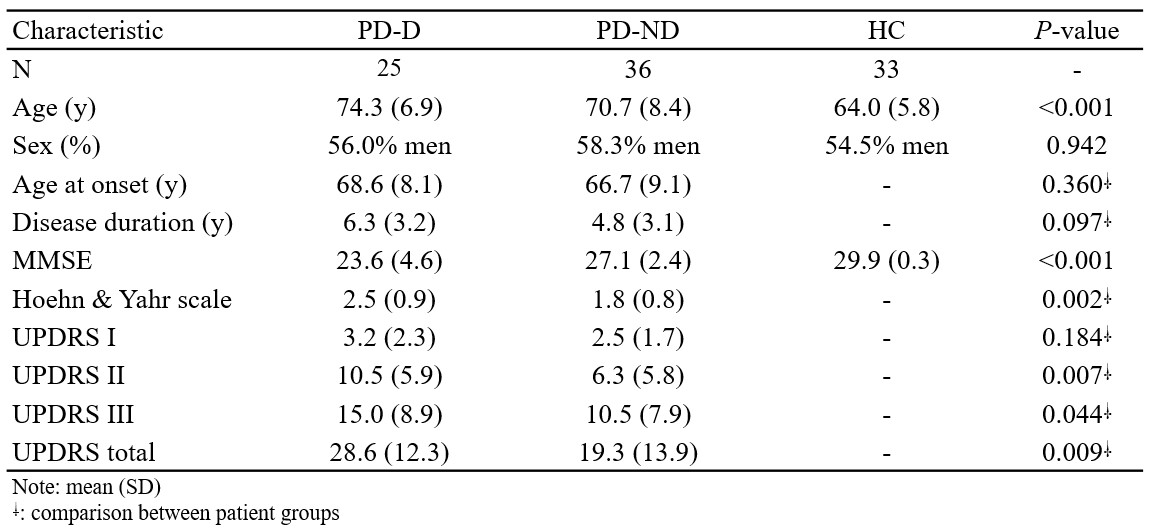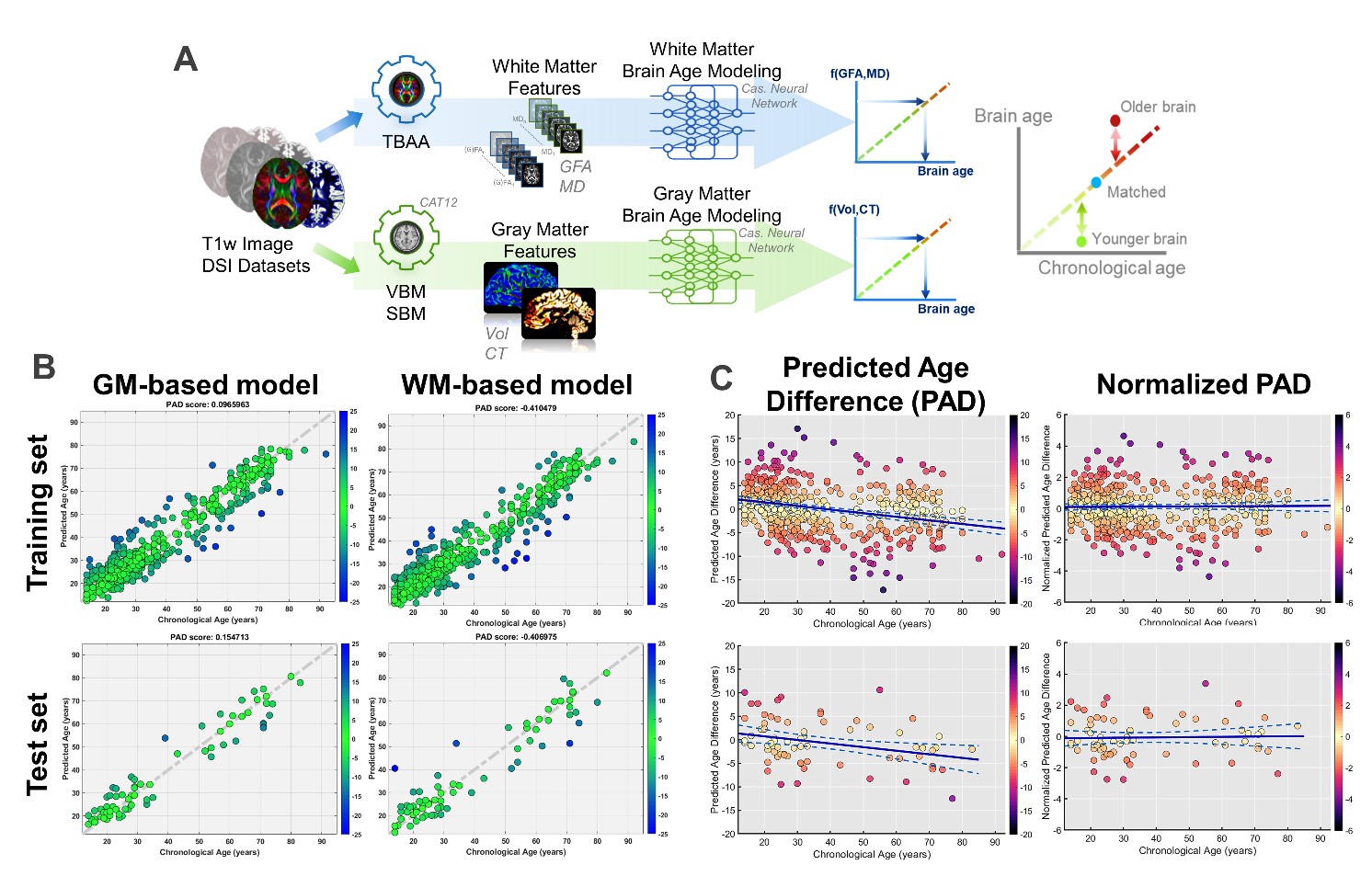Category: Parkinson's Disease: Neuroimaging
Objective: To investigate “brain age” in Parkinson disease (PD) with and without cognitive decline, and its correlation with motor and cognitive performance.
Background: Although brain age estimation has been tested in various neurodegenerative diseases such as dementia to explore aberrant brain aging, it is unclear whether the degree of brain aging may differ in PD with cognitive decline (PD-D) and those without cognitive decline (PD-ND).
Method: Patients with PD-D (n=25) or PD-ND (n=36) and healthy controls (HC) were enrolled in this study (Table1). Cognitive status was evaluated by Mini-Mental State Exam (MMSE). Motor function was evaluated by the Unified PD Rating Scale (UPDRS). All participants were scanned by a 3T MRI system (TIM Trio, Siemens) to acquire T1w images (used to extract gray matter (GM) features [1]) and diffusion spectrum images (used to extract white matter (WM) features [2]) for brain age prediction (Fig1-A). The brain age models were created using cascade neural network [3] based on 482 cognitively healthy subjects and validated in independent 70 healthy subjects (Fig1-B). To remove the age-related bias, a correction model was used to transform predicted age difference (PAD) into normalized PAD (nPAD) (Fig1-C); higher nPAD indicates older brain [4]. The group comparisons of nPAD were conducted between groups. Also, partial correlation of nPAD with MMSE and UPDRS was estimated, while regressing out age, sex, and illness duration.
Results: Significantly reduced MMSE was noted in PD-D (Table1). The patients with PD-D showed significantly older brain age compared to those with PD-ND and HC based on GM features (p =0.012, p =0.014) (Fig2-A), but there was no difference between PD-ND and HC. In the WM, the brain age was significantly older in PD-D compared to HC (p =0.036). Moreover, MMSE was negatively correlated with GM-nPAD (p =0.031) in PD-D; however, no significant correlation existed between MMSE and nPAD in the rest of combinations (Fig2-B). Also, no significant correlation was found between UPDRS and nPADs in the patient groups.
Conclusion: Patients with PD-D revealed advanced brain age, especially in GM features, compared to those with PD-ND and HC, suggesting that premature brain aging might exist in PD with, but not without, cognitive decline. Moreover, lower MMSE might have older GM brain age in patients with both PD and cognitive impairment.
References: [1] Gaser, C., & Dahnke, R. (2016). CAT-a computational anatomy toolbox for the analysis of structural MRI data. Hbm, 2016, 336-348. [2] Chen, Y. J., Lo, Y. C., Hsu, Y. C., Fan, C. C., Hwang, T. J., Liu, C. M., … & Tseng, W. Y. I. (2015). Automatic whole brain tract‐based analysis using predefined tracts in a diffusion spectrum imaging template and an accurate registration strategy. Human brain mapping, 36(9), 3441-3458. [3] Chen, C. L., Hsu, Y. C., Yang, L. Y., Tung, Y. H., Luo, W. B., Liu, C. M., … & Tseng, W. Y. I. (2020). Generalization of diffusion magnetic resonance imaging–based brain age prediction model through transfer learning. Neuroimage, 217, 116831. [4] Chen, C. L., Hwang, T. J., Tung, Y. H., Yang, L. Y., Hsu, Y. C., Liu, C. M., … & Tseng, W. Y. I. (2020). Multifaceted Brain Age Measures Reveal Premature Brain Aging and Associations with Clinical Manifestations in Schizophrenia. medRxiv.
To cite this abstract in AMA style:
MC. Kuo, CL. Chen, RM. Wu, WY. Tseng. Parkinson Disease with, but not without, Cognitive Decline Reveals Advanced Brain Aging [abstract]. Mov Disord. 2021; 36 (suppl 1). https://www.mdsabstracts.org/abstract/parkinson-disease-with-but-not-without-cognitive-decline-reveals-advanced-brain-aging/. Accessed October 17, 2025.« Back to MDS Virtual Congress 2021
MDS Abstracts - https://www.mdsabstracts.org/abstract/parkinson-disease-with-but-not-without-cognitive-decline-reveals-advanced-brain-aging/



